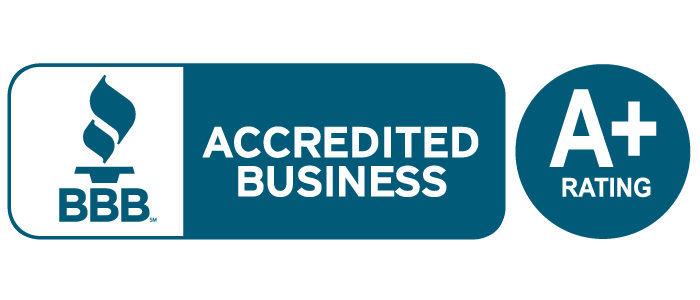Many Canadians worry they’ll lose everything if they file for bankruptcy. Thankfully, bankruptcy in Canada isn’t designed to leave you empty-handed. Federal and provincial laws outline bankruptcy exemptions—assets you can keep—and what is considered non-exempt (potentially surrendered to repay creditors).
This article explains:
- Exempt vs. non-exempt assets
- Province-by-province exemption limits
- How homes and vehicles are treated
- Why consumer proposals can help you keep what matters most
What are Non-Exempt assets? (What You Lose)
Non-exempt assets are items or property that may be sold (or have their equity “realized”) to repay creditors when you file for bankruptcy. The idea is simple: if you own valuable assets and choose to eliminate your debts via bankruptcy, the proceeds from non-exempt property help creditors recoup a portion of what they’re owed.
Common items you may need to surrender to your Licensed Insolvency Trustee could include:
- Second vehicles or recreational vehicles
- Valuable collections (art, coins, jewelry)
- Investments (stocks, bonds) not protected by registered plans
- Significant cash in the bank beyond basic living costs
- Home equity exceeding provincial exemption limits
- Second properties (vacation homes, cottages)
- Inheritances received during bankruptcy
- Tax refunds for the year you file and outstanding prior returns
Value means the equity in these assets, after repaying any secured loans or registered liens. For example, if you own a home worth $800,000 and you have a mortgage of $675,000 you have equity in your home of $125,000. It is this equity that will be surrendered, subject to any exemption limits.
What Are Exempt Assets? (What You Keep)
Personal bankruptcy is not meant to be punitive. You do not lose everything. Exempt assets are protected under both federal and provincial legislation, ensuring you can maintain a reasonable standard of living—even while settling your debts. Exempt assets cannot be seized by unsecured or Licensed Insolvency Trustee.
Bankruptcy exemptions do not apply to secured creditors. If you have pledge collateral for a loan, your lender can repossess the assets if you stop making your loan payments.
Federal Exemptions
Under Section 67(1) of the Bankruptcy & Insolvency Act (BIA), the following are typically excluded from seizure:
- Property held in trust for someone else
- Property that is exempt by provincial laws
- GST/HST credit payments
- Certain prescribed government benefits (e.g., Child Tax Benefit, CERB, CRB, HST cheques)
- RRSP/RRIF balances, except contributions made in the 12 months before filing
- RDSP (Registered Disability Savings Plan) balances
Limitations amounts are based on equity, after any amount owing. Value is also based on resale or liquidation value.
Provincial Exemptions
Each province (and territory) sets additional exemption limits—the dollar values or categories of assets you’re allowed to keep. These can include clothing, household furniture, tools of your trade, and a certain amount of equity in a home or vehicle. The next section breaks these down, province by province.
- Alberta
Limitation amounts are set by provincial law, specifically the Civil Enforcement Act and its regulations.
- Necessary food for 12 months
- Clothing up to $4,000
- Household furnishings and appliances up to $4,000
- One motor vehicle up to $5,000
- All medical and dental aids
- Principal residence value up to $40,000
- Tools used to earn an income up to $10,000
- Farm property (up to 160 acres with conditions)
- Farming equipment with certain conditions
- RRSP, RESP, RDSP balances except for unusual contributions
- Life insurance where beneficiary is spouse, child, parent or grandparent
- Most pensions are exempt
- Up to $40,000 in equity in your personal residence (pro-rated for joint ownership).
- British Columbia
British Columbia limitation amounts are defined in the BC Exemptions Regulation.
- All clothing
- Household furnishings and appliances up to $4,000
- One motor vehicle up to $5,000 ($2,000 if behind on child support)
- Tools and property necessary for work up to $10,000
- All medical and dental aids
- Registered savings plans (RRSP, RRIF) except contributions made in the last 12 months
- Most pensions and certain life insurance policies are exempt
- $9,000 equity in your personal residence ($12,000 in Vancouver and Victoria)
- Manitoba
Limitation amounts are regulated in the Manitoba Executions Act.
- Necessary food & fuel for 12 months
- All necessary clothing
- Furniture and household appliances up to $4,500
- One motor vehicle up to $3,000 (must be used for business or transportation to work)
- Tools of the trade up to $7,500
- Certain farm equipment, livestock, tools, seed stock
- Up to 160 acres farmland & related buildings
- All health aids
- Registered savings plans (RRSP, RRIF, DPSP) except unusual contributions
- Some pensions
- $2,500 in home equity ($1,500 if co-owned)
- New Brunswick
Exempt assets and provincial limits are listed in the Memorials and Executions Act.
- Food and fuel for 3 months
- All clothing
- Furniture, furnishing & appliances up to $5,000
- Tools used for trade up to $6,500
- One motor vehicle up to $6,500 if used for work
- Specifics for farm property including animals, feed and seed
- All medical & health aids
- Registered savings plans (RRSP, RRIF) except contributions made in the last 12 months
- Certain government pensions
- Newfoundland
Exempted property is listed in the Judgement Enforcement Act with amounts in the regulations.
- Necessary food and fuel for 12 months
- Clothing up to $4,000
- Household furnishings and appliances up to $4,000
- $500 total exemption for items of sentimental value
- One motor vehicle up to $2,000
- Tools of trade or business (including farming, fishing, or aquaculture) up to $10,000
- Registered savings plans (RRSP, RRIF, RDSP)
- Up to $10,000 equity in your personal residence
- Nova Scotia
Exemptions are listed in the Judicature Act with limitation amounts set by regulation.
- Unlimited food & fuel for family
- All clothing
- Household furniture and appliances up to $5,000
- One motor vehicle up to $6,500
- All medical and health aids
- Tools of the trade (including farm equipment, fishing) up to $7,500
- No limit on feed, seeds, livestock for domestic use
- Registered savings plans (RRSP, RRIF) except contributions made in the last 12 months
- Some pensions
- Ontario
Exempt assets are listed in the Execution Act with amounts set in its Regulations.
- All clothing
- Household furniture, equipment, food and fuel up to $14,180
- One motor vehicle up to $7,117
- Tools to earn a living up to $14,405
- Up to $31,379 for farming animals and equipment
- Registered savings plans (RRSP, RRIF) except contributions made in the last 12 months
- Most other pension plans and certain life insurance policies
- If your principal residence equity is less than $10,783 it is exempt, otherwise there is no home equity exemption
- Prince Edward Island
Exemptions and limits are regulated in the Judgment and Execution Act.
- All clothing
- Household furniture, equipment, food and fuel up to $2,000
- One motor vehicle – up to $6,500 if used to get to work, otherwise $3,000
- All medical and health aids
- Tools to earn a living up to $2,000
- Personal property used in farming or fishing up to $5,000
- Registered savings plans (RRSP, RRIF) except contributions made in the last 12 months
- Some pensions
- Quebec
Provincial bankruptcy exemptions are listed in the Code of Civil Procedure. The Quebec government website also lists unseizable property.
- All food and fuel
- All clothing
- Household furniture and appliances up to $7,000
- One vehicle required for work
- All farming exempt
- Registered savings plans (RRSP, RRIF) except contributions made in the last 12 months
- Certain pensions
- Equity in personal residence up to $20,000
- Saskatchewan
Exempted assets are listed in The Enforcement of Money Judgements Act with amounts in the related regulations.
- Clothing and jewelry up to $7,500
- All household furniture and appliances
- One vehicle up to $10,000
- All tools of the trade
- Specific exemptions for farmers including livestock, equipment, feed and seed
- If your home equity is less than $10,000 it is exempt, otherwise there is no home equity exemption
- Certain pensions and life insurance including DPSPs
- Up to $50,000 in home equity
- Yukon
Exemptions are listed in the Yukon Exemptions Act.
- Food and fuel up to 12 months
- No limit on clothing
- Household furniture, utensils and equipment up to $200
- Animals, books and tools to earn a living up to $600
- Registered savings plans (RRSP, RRIF) except contributions made in the last 12 months
- Up to $3,000 equity in your home
- Northwest Territories
Exempt assets can be found in the NWT Exemptions Act.
Limitation amounts are set by the territorial Exemptions Act.
- Food and fuel for 12 months
- No limit on clothing
- Household furniture and appliances up to $5,000
- One vehicle up to $6,000
- Hunting tools up to $15,000
- Tools of the trade up to $12,000
- Registered savings plans (RRSP, RRIF) except contributions made in the last 12 months
- Equity in principal residence up to $50,000
- Nunavut
Exemptions are regulated in the Nunavut Consolidation of Exemptions Act.
- Food and fuel for 12 months
- Unlimited clothing
- Unlimited household furniture and appliances
- All medical and dental aids
- Unlimited hunting and tools of the trade
- Up to $35,000 in home equity
- Registered savings plans (RRSP, RRIF) except contributions made in the last 12 months
- Certain pensions and life insurance policies
Homes & Cars: Special Considerations
Most secured debts (like a mortgage or car loan) are not erased by bankruptcy, and the lender has rights to the property if you don’t keep up payments.
- Keeping Your Car: If your vehicle’s equity is under your province’s exemption limit (and you continue payments on any loan), you can usually keep it.
- Keeping Your Home: If your home equity is under your province’s exemption threshold, your house is generally safe. If it’s above, you may need to buy back the difference from the bankruptcy estate or consider a consumer proposal to protect your equity.
For more detail, see our guides on how bankruptcy affects your car and how bankruptcy affects your house.
Asset Retention: Bankruptcy vs. Consumer Proposal
A consumer proposal is a popular alternative to bankruptcy, offering many benefits:
- Retain All Assets: Keep both exempt and non-exempt items.
- Lower Debt Payments: You pay back only a portion of what you owe, often interest-free.
- Legal Protection: Stops wage garnishments, lawsuits, and collection calls, just like bankruptcy.
- Flexible Payments: Proposals can stretch payments up to 5 years, making them easier to afford than a bankruptcy if you have significant non-exempt assets.
Essentially, a consumer proposal can preserve everything you own—at a cost that’s typically less than your total debt.
Next Steps: Talk to a Licensed Insolvency Trustee
Curious which assets are exempt for you personally, or whether you’d fare better with a consumer proposal? The simplest way to find out is to talk to a Licensed Insolvency Trustee. They can confirm the latest exemption amounts in your province, assess your financial situation, and walk you through both bankruptcy and proposal pros and cons.
Ready for advice with no judgment?
Bankruptcy isn’t meant to punish—it’s designed to give you a fresh start. Whether you pursue bankruptcy or a proposal, knowing the difference between non-exempt and exempt assets helps you make the right financial decision for your future.
Similar Posts:
- Ontario Bankruptcy Exemptions: What Can They Take and What Assets You Keep
- Ontario Bankruptcy Exemption Law Changes Protect Home Equity
- RRSP and Bankruptcy in Canada: Will I Lose My Retirement Savings?
- What Happens to Joint Property in a Bankruptcy?
- Troubled Debtors Don’t Have Any Assets Left to Sell






